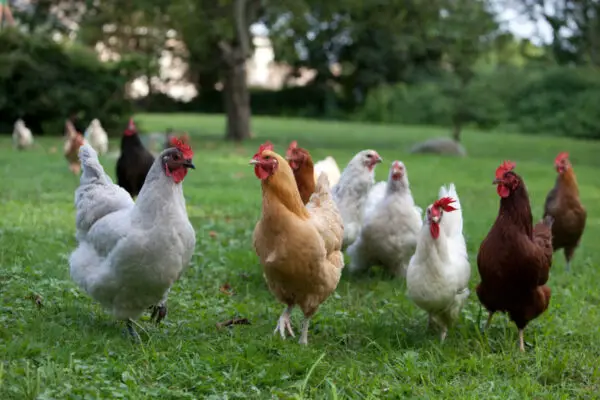The natural soundscape is replete with the sounds of birds, both singing and calling. But does a bird understand the significance of its own vocalizations as it chirps away? Both bird aficionados and ornithologists have long been captivated by this intricate topic.
This is a simple response in case you’re pressed for time: According to research, birds understand the basic meaning and purpose of their frequent cries and songs, even though they lack human-like language.
Different Bird Vocalization Types
Though their lovely cries and songs are well-known, did you realize that various kinds of vocalizations have distinct functions in birds? Birds employ a range of sounds during courting and flock communication to transmit messages. Let’s examine a few of the most prevalent vocalizations seen in birds.
Songs for Territoriality and Courtship
The song is among the most well-known forms of bird vocalizations. In order to mark their territory and entice a partner, male birds often sing. Birds use these songs to signal to other birds that they are there and want to communicate, in addition to being lovely to listen to.
Every type of bird has a distinctive song that helps members recognize one another and prevent confrontations.
For instance, many communities are acquainted with the catchy song of the American Robin. To protect their territory and entice a female mate, male robins sing. Their upbeat melodies herald the arrival of spring and serve as an announcement to prospective partners of their availability.
Make Calls to Engage with the Flock
Birds communicate with other birds in their flock by making contact calls in addition to songs. These calls help to organize group movements and preserve social cohesiveness. Birds communicate with one another by brief and basic contact calls, which let them keep in touch even when they are out of sight.
Consider contact calls as an avian means of communicating, “Hey, I’m here!” How are you doing? Birds’ ability to communicate and remain with their flock is aided by these cries, which might be vital to their survival.
Alarm Sounds in Reaction to Dangers
Birds use alarm cries to notify other nearby birds of possible threats. Depending on the nature of the threat, these calls change. For instance, birds may make a loud, high-pitched shriek or a sequence of fast, loud notes to notify others to the presence of a predator.
Not only can alarm sounds help the specific bird issuing them, but they also alert other birds in the area. Birds may cooperate to defend themselves and their group by alerting one another to danger.
We can better understand the intricacy of avian communication when we are aware of the many vocalizations made by birds. Thus, the next time you hear a bird calling or singing, stop to listen and be amazed at the amazing ways that these avian beings communicate.
Proof That Birds Can Understand What Calls Mean
Birds are often appreciated for their lovely cries and songs, but do they really know the significance of what they are singing? According to recent studies, birds’ cognitive and communicative capabilities are shown by their apparent profound knowledge of the information they send via their sounds.
Alarm Calls With Specific Contexts
Bird communication is remarkable because birds may make context-specific warning cries. For instance, several bird species have distinct warning sounds for various kinds of predators.
They can make different sounds to alert other nearby birds, and they can tell the difference between a ground predator like a snake and a flying predator like a hawk. This demonstrates that birds are able to identify various hazards and know how to react appropriately in each circumstance.
Corresponding Answers in Pairs
The fact that birds may perform duets with other birds is an additional fascinating piece of evidence supporting their comprehension of their sounds. In some species, the male and female sing different sections of a duet together to produce a melodic harmony.
Research has shown that birds can precisely time and pitch their partner’s cries, demonstrating a thorough comprehension of the structure and meaning of the duet. This degree of synchronization points to an understanding level higher than mere imitation.
Human Speech Mimicry
The capacity of birds to replicate human speech is perhaps the best-known illustration of their understanding of human calls. Some animals, like parrots and mynah birds, can mimic human speech patterns quite well.
Even while they may not completely comprehend the meaning of the phrases, their ability to imitate human speech shows how adept they are at vocal learning and how flexible their minds are.
Bird Vocal Learning
Although people have always appreciated birds for their lovely songs, have you ever considered whether or not they really comprehend what they are saying? It turns out that a great number of bird species are quite adept at mimicking sounds, including human speech.
Within the animal world, vocal learning is an uncommon occurrence that is limited to a few chosen species, such as humans, dolphins, elephants, and of course, birds.
Children’s Practice Songs
The manner in which young birds rehearse their songs is an intriguing facet of their vocal development. Young birds go through a similar process to how human infants babble and copy sounds before they learn to talk.
They start out making a range of erratic noises, which progressively transform into intricate and well-structured tunes. They may improve their vocalizations and get up tips from the adult birds around during this practice time. It resembles singing in the shower done by birds!
Variations in Regional Dialects
The emergence of dialects is a fascinating facet of bird vocal learning. Birds in various places have diverse variances in their songs, much as different human societies have varied accents and dialects.
Through vocal learning, these dialects are transmitted from one generation to the next. For instance, a research on song sparrows revealed that the birds’ languages varied by region, and each group had its own distinct singing pattern.
Birds seem to have their own unique take on regional dialects!
Capacity to Compose Songs Innovatively
Birds may learn and mimic known songs, but they can also come up with original tunes of their own. Indeed, several bird species are renowned for their remarkable ability to improvise.
For instance, the magnificent lyrebird, which is native to Australia, is well-known for its ability to replicate a variety of noises, such as chainsaws, automobile alarms, and human speech! These birds can compose entirely original songs, demonstrating their extraordinary creative ability.
Intense Intelligence in Certain Avian Species
Even though it’s tempting to write off birds as basic animals, new studies have shown that certain bird species are very intelligent. These amazing birds exhibit a degree of intellect previously believed to be exclusive to mammals.
Crows and parrots are two prominent instances of birds with superior cognitive abilities.
Parrots’ Complexity of Communication
Although parrots are well known for being able to imitate human speech, they are also very skilled communicators. These vibrant birds are able to comprehend and make meaningful use of language. They are able to link certain words to things, behaviors, and even feelings.
Certain parrots, including African grey parrots, have hundreds of words in their vocabularies, according to studies. They are even able to put their demands and wants into simple language. This degree of intricacy in communication implies that parrots have a profound comprehension of the meanings associated with the words they use.
Both in the wild and in captivity, parrots have been shown to possess sophisticated communication abilities. In the wild, parrots communicate with other members of their group by making sounds that indicate danger, food sources, and other pertinent information.
Their cognitive strength is shown by their ability to speak successfully in challenging social contexts.
Crows’ Problem-Solving Ability
For a long time, people have respected crows for their ability to solve problems. They are known to get food from difficult-to-reach areas using tools like sticks or twigs. Additionally, crows have been seen making and using tools to carry out certain jobs, such bending wires to hook food out of a container.
These actions show a comprehension of cause and effect in addition to the capacity to employ items as instruments to accomplish tasks.
The University of Cambridge performed a noteworthy study that demonstrated the problem-solving abilities of New Caledonian crows. These birds were given a series of challenging riddles that needed to be solved in stages.
The crows’ astounding ease in solving these riddles is evidence of their critical thinking and situational flexibility.
Our preconceived conceptions about the intelligence of non-mammalian animals are challenged by the sophisticated cognition of parrots and crows. It draws attention to the astonishing range of cognitive capacities present in the animal realm.
Additional investigation into birds’ cognitive capacities may clarify the evolutionary roots of intelligence and have consequences for our comprehension of animal consciousness.
Restrictions with Relation to Human Language
Although birds are very good communicators, there are a few things that set them apart from human language proficiency. These restrictions include limited vocabulary, ignorance of intellectual ideas, and a lack of familiarity with grammar.
Absence of Recognized Syntax
In contrast to the intricate grammatical rules and structures found in human languages, birds’ communication systems lack a recognized syntax. Unlike human languages, their vocalizations are often instinctive and not controlled by a system of rules.
Birds use a variety of signals, including cries, songs, and gestures, to communicate, but they don’t always follow a set pattern or structure.
Reduced Word Counts
The narrower vocabulary of birds than those of humans represent another drawback of bird language. Even while some bird species have a large variety of vocalizations, their repertoire is still far less than that of human languages.
A person may have thousands of words in their vocabulary, yet a songbird may only know around 20 distinct melodies.
Lack of Knowledge Regarding Abstract Concepts
Birds are incapable of comprehending or expressing abstract ideas. Through words and phrases, human language enables us to communicate abstract concepts, complicated emotions, and sophisticated ideas. In contrast, birds mostly employ their vocalizations for basic communication needs like seeing potential dangers, luring potential mates, or demarcating their territory.
They lack the mental capacity to understand and articulate abstract ideas like justice, love, or beauty.
These restrictions draw attention to the essential distinctions between human language and avian communication. Although birds are very skilled communicators and communication is vital to their existence, avian language is not as rich and versatile as human language.
Final Thoughts
Although it’s unlikely that birds have the same level of sophisticated language understanding as humans, evidence indicates that they do, at least in part, comprehend the meaning and purpose of their cries and songs. Fascinating insights into the avian mind will come from more research on the cognition and communication of our feathery pals.





![The Best Wood For Bird Houses [Comprehensive Guide]](https://birdsology.com/wp-content/uploads/2023/08/cedar-birdhouse-plans-600x400.jpg)
One thought on “Do Birds Understand What They Are Saying?”